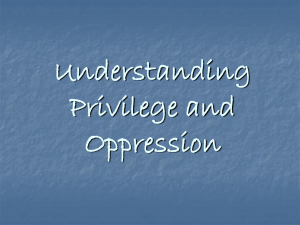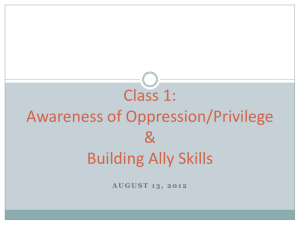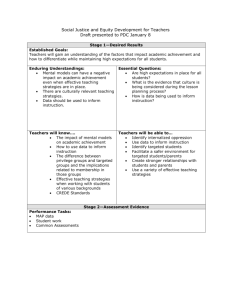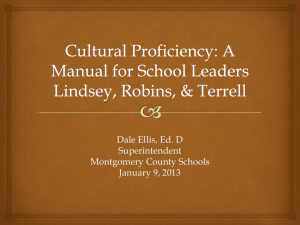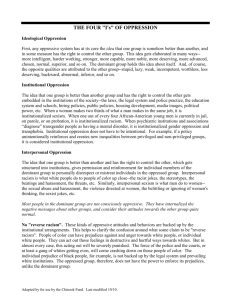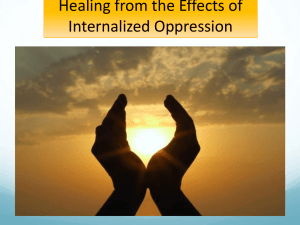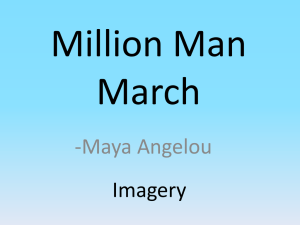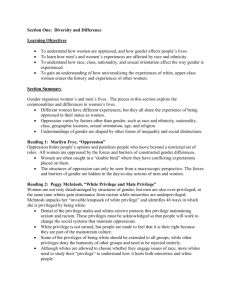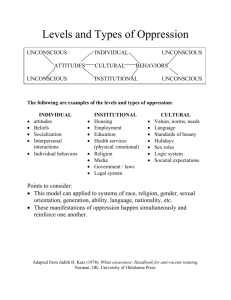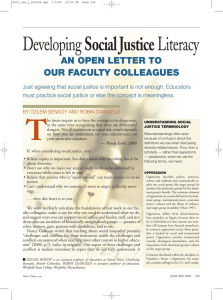Power, Privilege, and Oppression
advertisement
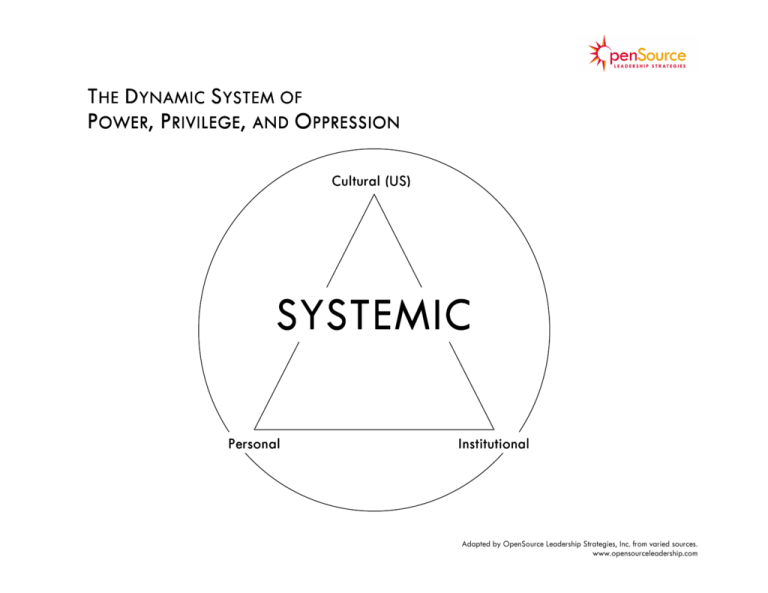
THE DYNAMIC SYSTEM OF POWER, PRIVILEGE, AND OPPRESSION Cultural (US) SYSTEMIC Personal Institutional Adapted by OpenSource Leadership Strategies, Inc. from varied sources. www.opensourceleadership.com SOME W ORKING DEFINITIONS Diversity = The collection of differences and similarities of a group (Roosevelt Thomas). Diversity is not a person; it is a culture we all create. Prejudice = An attitude based on limited information, often stereotypes. Usually, but not always, negative. Positive and negative prejudices alike, especially when directed toward oppressed people, are damaging because they deny the individuality of the person. No one is free of prejudice. Examples of prejudice: women are emotional; Asians are good at math. Power = Access to resources and to decision makers to get what you want done, the ability to influence others, the ability to define reality for yourself and potentially for others. Power can be visible, hidden, or invisible. Power can show up as power over others, power with others, and/or power within. Oppression = Prejudice + Power. The systematic targeting or marginalization of one social group by a more powerful social group for the social, economic, and political benefit of the more powerful social group. Oppression can manifest through racism, classism, sexism, heterosexism, and other isms. Only the dominant group can be oppressive (i.e., racist, classist, etc.) because only the dominant group has the power. Oppression is the losing end of privilege (Allen Johnson). Privilege = Unearned benefits conferred upon members of mainstream or dominant groups (in the US, these include male, white, heterosexual, affluent, young, able-bodied, and/or Christian) at the expenses of others. Privilege exists when one group has something of value that is denied to others simply because of the groups they belong to, rather than because of anything they’ve done or failed to do (Peggy McIntosh). Privilege can manifest through visible advantages such as access to wealth, professional opportunities, and social status, as well as more subtly through, for example, freedom of behavior and setting the standard of normality against which others are judged. Dominant group members may be unaware of their privilege or take it for granted. Ally = someone who makes the commitment and effort to recognize their privilege (based on gender, class, race, sexual identity, etc.) and work in solidarity with oppressed groups in the struggle for justice. Allies understand that it is in their own interest to end all forms of oppression, even those from which they may benefit in concrete ways. We need to be clear that there is no such thing as giving up one’s privilege to be “outside” the system. One is always in the system. The only question is whether one is part of the system in a way that challenges or strengthens the status quo. Privilege is not something I take and which I therefore have the option of not taking. It is something that society gives me, and unless I change the institutions that give it to me, they will continue to give it, and I will continue to have it, however noble and egalitarian my intentions (Harry Brod). Adapted by OpenSource Leadership Strategies, Inc. from varied sources. www.opensourceleadership.com Systemic (or Structural) Oppression = The ways in which history, culture, ideology, public policies, institutional practices, and personal behaviors and beliefs interact to maintain a hierarchy – based on race, class, gender, sexuality, and/or other group identities – that allows the privileges associated with the dominant group and the disadvantages associated with the oppressed, targeted, or marginalized group to endure and adapt over time (Aspen Institute). The dynamic system of power, privilege, and oppression depends on four conditions (adapted with permission from dRworks Dismantling Racism Workbook, dismantlingracism.org): 1. Constructed Target Group Oppression – An historical and systematic construct that penetrates every aspect of our lives. Includes prejudice in our attitudes, feelings, and behaviors. Includes exclusion, discrimination, suspicion, fear, and hate. Manifests personally, institutionally, and culturally. People seen only as part of the target group, not as individuals. Lower expectations. Fewer options and choices. 2. Internalized Oppression – Internalized negative messages about target group by target group. Belief that there is something wrong with being part of target group. Shame, self-hatred, and low self-esteem that results when members of an oppressed group take on society’s attitudes toward them and adopt myths and stereotypes about themselves. Internalized oppression can manifest through a sense of inferiority; lowered expectations and limited imagination of possibilities; holding members of one’s own group to higher standards of behavior; not associating with one’s own group; changing oneself in order to pass or assimilate; identifying with the dominant group; oppressing other members of one’s own group; self-destructive behavior; and inability to ally oneself with other oppressed people. Cycles through generations. 3. Granted Dominant Group Privilege – An invisible, weightless knapsack of special provisions and blank checks (Peggy McIntosh). Abundant choices, options, and possibilities. The default position. Seen as individuals. Can choose to avoid the impact of oppression without penalty (although also hurt by it). Live in a world where worth, rightness, and personhood are continually validated. 4. Internalized Dominant Dominant Group Supremacy – My worldview is the only worldview. The standards and norms I live by are universal. My achievements have to do with me, not my membership in the group; I feel that I personally earned, through work and merit, any and all of my successes. Inflated sense of self. I have the right to be comfortable; if I am not, someone else is to blame. Equate individual acts of unfairness against members of my group with systematic oppression of target groups. I have many choices – everyone else has those same choices. I am not responsible for what happened before; I have a right to be ignorant. I see antioppression work as only in the interests of target groups. Cycles through generations. Adapted by OpenSource Leadership Strategies, Inc. from varied sources. www.opensourceleadership.com THE DYNAMIC CYCLE OF DOMINANT GROUP Granted Privilege TARGET GROUP Internalized Supremacy Constructed Oppression (Overt or Subtle) POWER, PRIVILEGE, & OPPRESSION Internalized Oppression Adapted by OpenSource Leadership Strategies, Inc. from varied sources. www.opensourceleadership.com
